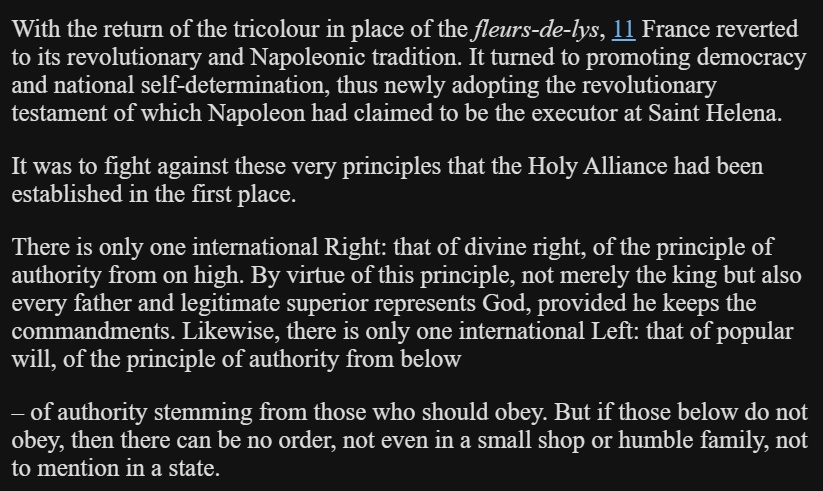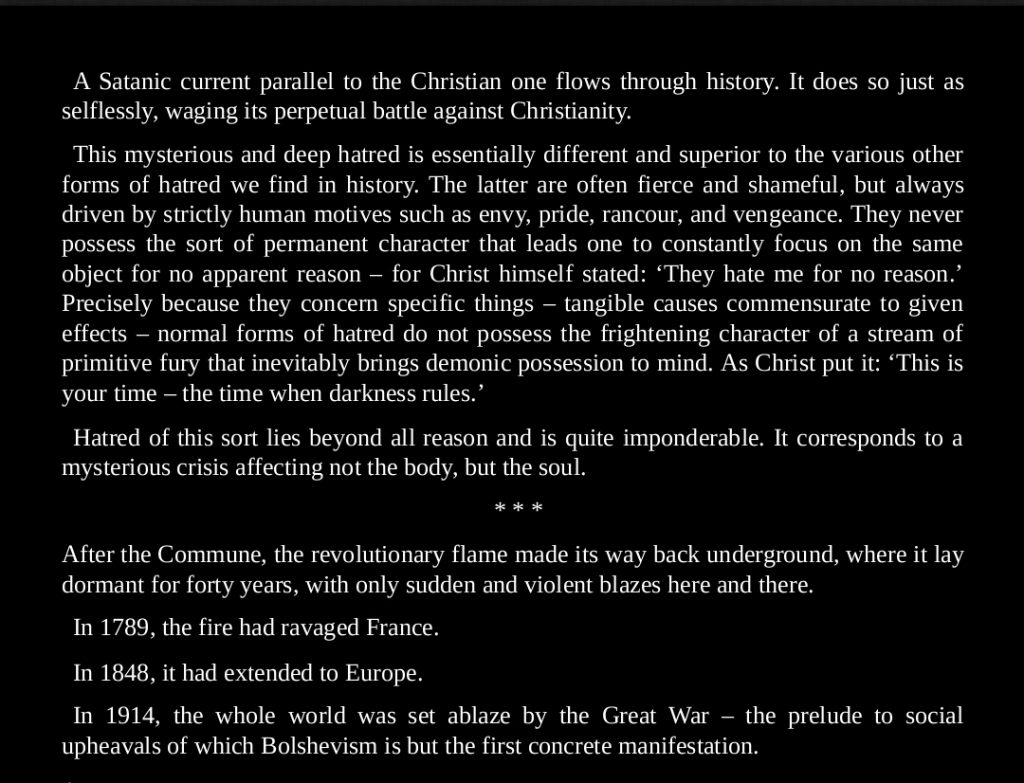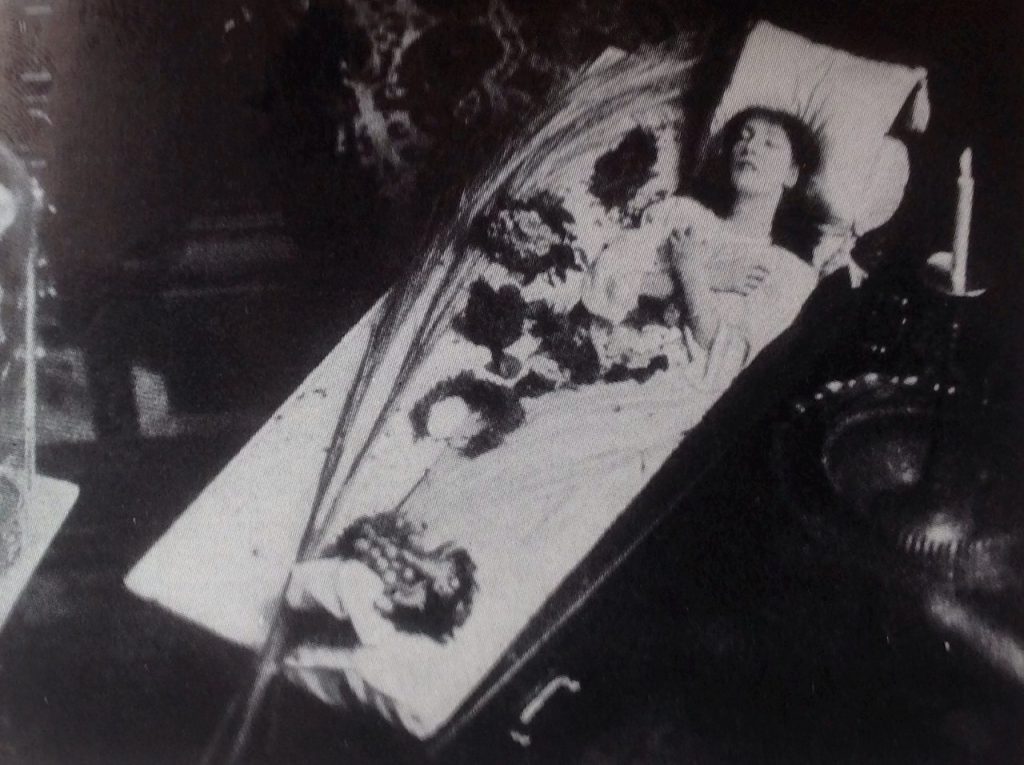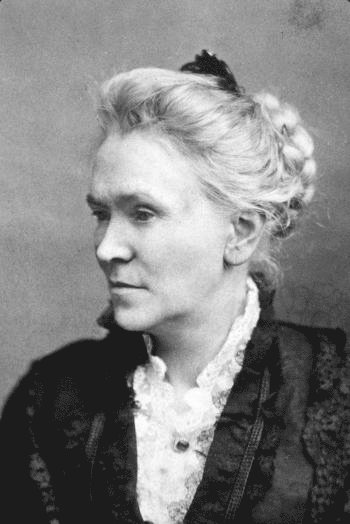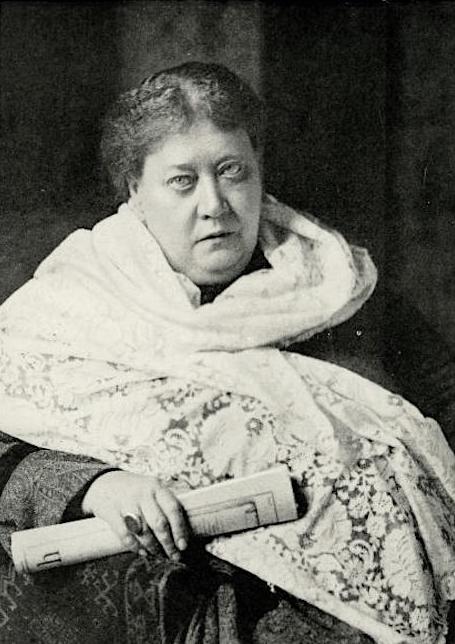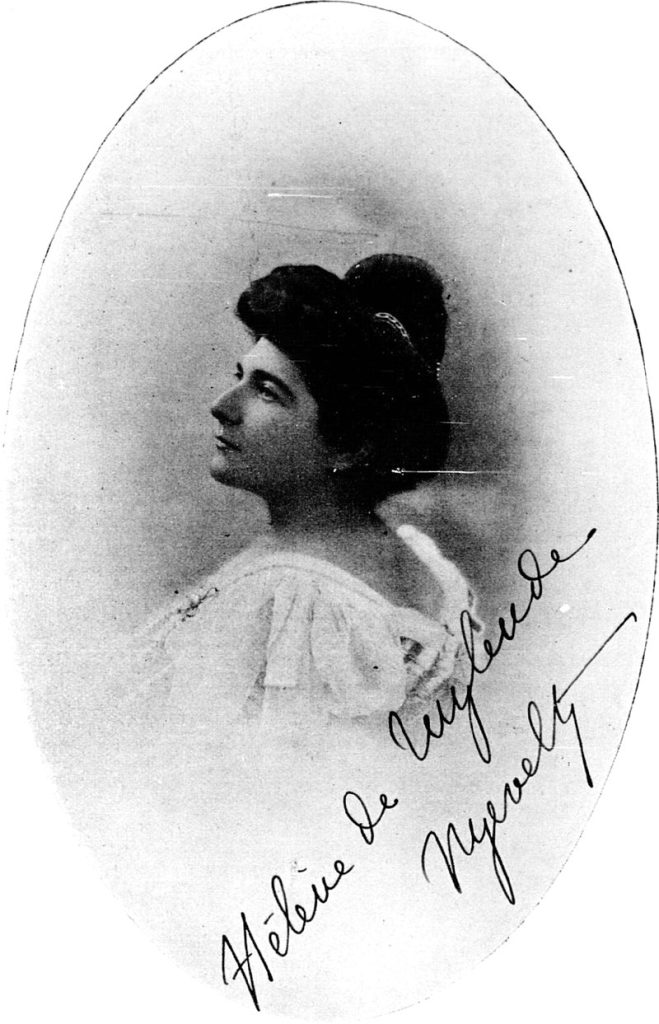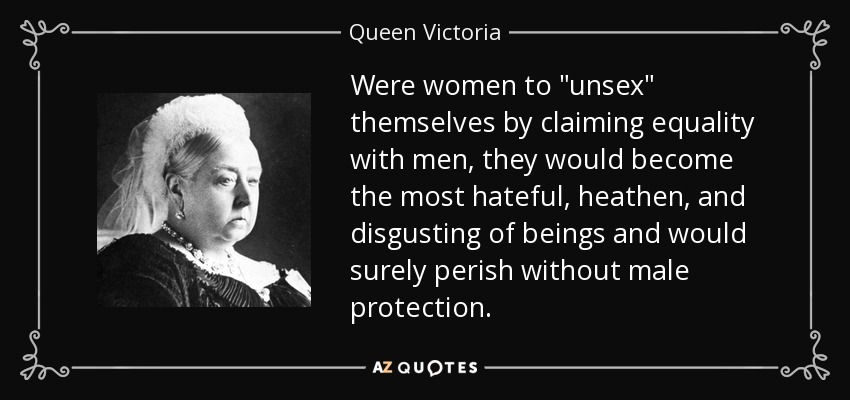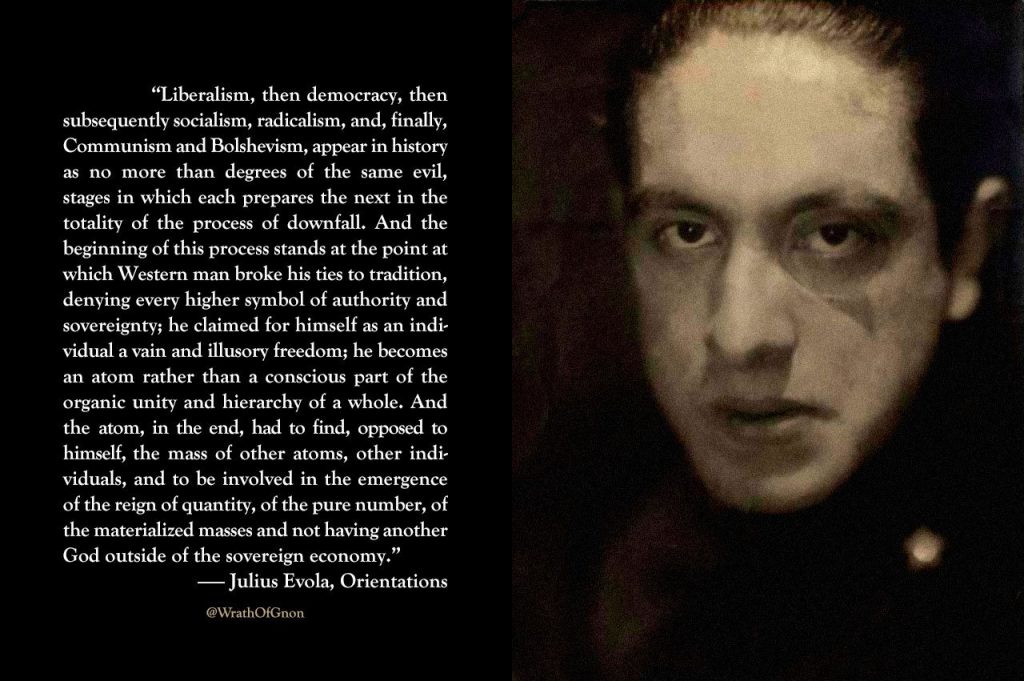Something or someone primordial and utterly, utterly real and active hates humanity very much, and targets our Heart . . .
Counter radicalism education is a form of preventive intervention that aims to counter the influence of insurgent rebellion ideologies and narratives on vulnerable individuals, especially young people and women, who along with traumatised children and fringe social outcasts, are the foremost targets of subversive ideology, radicalisation, and weaponization against nation-states and nation producing institutions such as family, education, and religious centres. It is based on the premise that education can foster critical thinking, resilience, and understanding of higher philosophical and cultural perspectives among learners. Counter radicalism education will be called for as a response to the growing threat of subversion and other forms of undermining the security and stability of societies, both online and offline.
The Luciferic Standpoint is a global cross cultural ontotheology that is summarised as being at odds with the monistic paradigm established in the Greek Presocratic dialogue of Parmenides and Zeno of Elea; who were the basis of the Essentialist theory of forms of Plato, also cited by Aristotle as morphe and mirroring eastern systems like the Advaita Vedanta. Diabolos, the most elementary expression of the devil principle, constitutes a fundamental discord in the nature of things. The concept of an adversarial opponent is rooted in many traditions worldwide, and is associated with femininity, chaos, darkness, temptation and fallenness in polytheist traditions as well as monotheist traditions, across the East and West, predating Moses, with many gods or forces taking the role of adversary or depicting feminine fallenness including: Yin (Taoism, I Ching), Loki (Norse), Set (Egyptian), Typhon (Greek, serpentine), Tiamat (Babylonian, serpentine), Surtr (Norse), Jörmungandr (Norse, serpentine), Níðhöggr (Norse, serpentine), Hades (Greek), Eris (Greek), Chernobog (Slavic, associated with Christian devil), Sitra Achra (Kabbalah), Python (Greek, serpentine), Asura (Hindu), Rakshasa (Hindu), Vasuki (Hindu, serpentine), Mara (Buddhist), Ahriman or Angra Mainyu (Zoroastrian), Apep or Apophis (Egyptian, serpentine), Humbaba (Mesopotamian), Kali (Hindu), Camazotz (Mayan), Prometheus (Greek, rebel against Olympus, satanist icon), Medusa (Greek, serpentine, Eve-like feminist icon), Izanami-no-Mikoto (Japanese, Lilith-like, fallen woman), Pandora (Greek, Eve-like). Satan has become synonymous with categorical Evil; in basic Judaism, Satan is not a persona as in Christianity, but a categorical “adversary”. Recent moral relativist subversion manipulatively attempts to paint the concept of archetypal Evil as exclusively Abrahamic and therefore foreign in order to stigmatise, hotly polarise and hijack your perceptions, ending in rootless nihilism. For many in the modern West, the Abrahamic instantiation is the only conception they have; by undermining this framework without providing alternatives, one is left dependant on moral relativism and the eternal flux of the phenomenonal world; hoodwinked into rootless nihilism again! Stand firm, do not fall for the narrow view and counter with positive strength, subversionists will try any ploy to get you into bed; the devil’s greatest trick is to convince you by hook or crook that she doesn’t exist, begging if she has to, quod erat demonstrandum. Moreover, it is a necessary concept to address as radical literature invokes the biblical Satan as an explicit rolemodel in replete, while forbidding you to acknowledge it as a spiritual force, with characteristic forked-tonguedness, as shall be demonstrated thoroughly.
Every extant entity encompasses dual facets: hyle (matter) and morphe (form). The specific configuration confers upon substance its essence—the intrinsic nature or “whatness” (i.e., “what it embodies”). Plato emerged as an early advocate of Essentialism, advancing the notion of ideal forms—a conceptual entity from which individual entities derive as replicas. Advaita (lit. “non-secondness”, rendered “nondualism”) refers to the idea that the sole reality is Brahman, whereas the ephemeral phenomenal world constitutes a deceptive manifestation (maya) of Brahman. The Presocratic Eleatics as well as Advaita Vedanta eschew the notion of dualities, as a facet of the phenomenal world.
These conceptions then, express a holistic Essentialist organising principle wherein each component acts as part of the body of a functioning and harmonious Whole. In the Indian subcontinent, Buddhism developed a Luciferic Standpoint in its doctrine of the “impermanence of all things” to relativise and negate the immutable Brahman and become the root of the Kshatriya revolt against the authoritative stewardship and guidance of Brahmana, demonstrating the discord and dissolution of one manifestation of the Radical Satanic.
“I am the spirit that negates.
Mephistopheles, Goethe’s Faust, quoted in part repeatedly by Karl Marx
And rightly so, for all that comes to be
Deserves to perish wretchedly;
‘Twere better nothing would begin.
Thus everything that your terms, sin,
Destruction, evil represent—
That is my proper element.”
Jump to Satanic Feminist radical figures
SHARE TO DERADICALIsE WOMEN
Do people remember the dark essence of the devil? And is it a factor in mundane life? Satan has had such a public relations revolution under Gnostic conceptions, the relativizing of the true ontological Evil and the Masonic tenet of equality and innate goodness of all. Under modern social critical and radical theories everything is evil but Evil, displaying a clear contempt for humanity. These ideas have gained such a footing in culture that the simple starting premise seems far away, strange and ephemeral; hard to grasp.

As a heavenly adversary, ha-satan (“the satan”) first appears in the Hebrew Bible, who serves Yahweh (God), prosecutes the nation of Judah in the heavenly court and tests the fidelity of Yahweh’s followers. In Judaism, Satan is considered as an agent subordinate to God, often understood as a metaphor for the yetzer hara, or “evil tendency”. The word has become associated with the linguistic concept in the modern west, the concept of archetypal Evil was not invented by Abrahamic faiths; subversionists continually attempt to relativise systems of identifying Evil in order to attack social norms; openly using the devil as a literal rolemodel is replete throughout radical literature.
One must lie like the devil, not timidly, not for a time only, but boldly and always. Voltaire, Letter to Theriot. A Freemason, Voltaire was instrumental to the violent Luciferic French Revolution and influenced the Founding Fathers behind the constitutional American Revolution.
Intrinsic to the satanic Luciferic Standpoint is a rejection of monism, the principle of Unity around a central ordering principle; and an inverted authority stemming from below, not above. Diabolos, the most elementary expression of the devil principle, constitutes a fundamental discord in the nature of things; no longer do phenomena act as part of the harmonious Whole under an organising principle. Heraclitus described this best when he said “Wisdom is one thing: [to understand the intelligence by which all things are steered through all things]; it is willing and it is unwilling to be called by the name Zeus.” The God most befitting Heraclitus is the devil. This provides a conception of the Satanic principle well before Christianity. Ideas like this find a common footing as the numerous branches of progressivist philosophies of Becoming throughout the ancient world and the modern day. These notions of eternal flux by conflicting opposites were famously combated by the presocratic Eleatics with a reductio ad absurdum; demonstrating the extents to which one must go to deal with dissolutionary subversive thinking and how insolent Diabolos is to being pinned down by conventional logic in employing theories of negationary flux. They showed that by taking the thesis of universal flux to its logical conclusion, in reducing phenomena to eternal change with no unity in an immutable ordering principle one would have to deny change itself!
Marx frequently quotes Goethe’s Mephistopheles, indicating his allegiance to the adversary of All that exists. His work makes ontotheological claims about meaning as a way of Being, therefore fulfilling the role of theology and aligning perfectly with gnostic Satanism. He takes great pains to acknowledge the dialectic tension of opposites, thesis, counter-thesis and synthesis, an intrinsically Satanic paradigm. His corpus reads like a Satanic hand-manual applied to social science and economics, frequently invokes metaphysical imagery, and rests heavily on dialecticism. With Marx, the dialectics of the Presocratics being a literal dialogue was no longer the case, but instead rested on Diabolos as contradiction. Dialectical materialism as advanced by Karl Marx adapts the Hegelian dialectic to a materialist theory of history. An example of a reference to Mephistopheles as the spirit of negation is as follows:
"Universal suffrage seems to have survived only for the moment, so that with its own hand it may make its last will and testament before the eyes of all the world and declare in the name of the people itself: “All that exists deserves to perish.” The Eighteenth Brumaire of Louis Bonaparte. Karl Marx 1852, which opens with a discussion of Hegelian dialectics.

(EPA)
The idea of disobedience causing one to become a godlike atomised individual independent of all higher symbols of Sovereignty is a persisting temptation for humanity, as it appeals to the pride and curiosity of human nature, and lately has worn the manipulative veneer of altruism, civil rights, and health care. Jury by the masses, or the lesser by pity ethics is the new norm. However, it is an open attack against the cross-cultural traditionalist paradigm of a holistic hierarchy wherein each component forms part of a harmonious, functioning Whole. High Priests (Pontifex Maximus, Rex Deus, Deus Imperator) represent a door to Heaven as the direct link to the Divine ordering principle manifested in the body of a Sovereign that is carried forth down the chain of command into the household and family, where the father represents the High Priest and Authority of God to his woman and children. The primordial disobedience thereby inverts the ordering principle of the hierarchy, atomises and dissolves it, emphasises it from the bottom up, and leads to disconnection and alienation from God as the loss of true happiness (privatio boni). The prime targets are those lower down in a hierarchy with grievances or a fresh vein of youthful ignorance, envy, and even naive optimism – women, children, peasants, social outcasts, minorities, misfit youth, workers; even sometimes wayward nobility such as the British Lords that conspired with William of Orange, seduced by greed and the possibilities of debt finance or the aforementioned Warrior aristocratic Kshatriya driven by force as the ultimate arbiter, unrestrained from all higher conceptions; all of whom become divided, atomised individuals and scattered halves, in pieces rather than part of a well differentiated, organised, hierarchical Whole under a greater force. This model and these principles of subversion have worked so well that today new identities are cynically manufactured as if off an assembly line — one thing persists, the seductive voice whispering that one has been cheated and ought to disobey.

Jacobins had a courtesan seated on the Altar, worshipped as the Goddess of Reason.
Still up to their old methods with the Femen activist above: “a prostitute, dressed up as the Goddess of Liberty, came forth from the temple”. Thomas Henry Dyer, LL.D.
In the end, never is the promise fulfilled, in fact, it still has yet to be; radicalism has resulted in a death toll of uncountable hundreds of millions, the destruction of family and nations, social chaos, interpersonal disharmony, and poverty. Everything is evil but Evil, displaying a clear contempt for humanity. It is increasingly looking more and more that by transhumanism, becoming God-like will cost our very humanity itself and all identifiable traits of human essence. There is a steep price indeed rarely spoken about in the initial manipulative bargain. That is the point. It is the anti-human and expresses an enmity and hatred of human systems, projected onto the ordering principle that keeps humanity running. The result is a futile casting off of all human identity. It turns out humanity does die from taking a bite of the fruit!

Liberation, suffrage, and even technological phenomenon such as transhumanism —(skip to feminism’s stated goal of establishing gender as divorced from biological sex; the radical transgender ideology in feminist desexing of women)— all echo the same repeating readily identifiable Satanic Gnostic forms. These narratives are invoked by radical subversionists to induce the original story of rebellion in identification with the radical element – rooted in characteristic jealousy for all that represents authority, first principles, and prosperity; and now even basic human standards of coherence and order such as beauty itself, sex characteristics, family etc. Something manipulative and shape-shifting seeks to dissolve us into nothingness, like Buddhist tenets applied writ large. Something wants to end humanity and target our most vulnerable point, our Heart. It relies on mockery, gaslighting, casuistry, and radical subversion. Under the Luciferic Standpoint, projection is the order of the day and a redemptive act to absolve negative feelings, guilt, and ontological baggage; so traditionalism is cast as “radicalism” to a wildly divergent radical new normal. It seethes with a hatred and projected envy. Any identification with the devil is confused at a fundamental ontotheological level. The first radicals, the Serpent, Lilith and Eve are cornerstones of feminist ideology and of gnostic theology and drove much of the radical literature in the 19th and 20th centuries. Baiting us by envy of authority and self-hatred is a real life instance of Original Sin in its prime manifestation; were there any doubts as to this, it is to be found before our very eyes precisely here! The biggest trick the devil played was to convince you she wasn’t real, because once you see it, you will realise the devil as an active force that stands for, confirms and demonstrates the presence of his opponent — the creator, the Heavenly Host. For who would knowingly choose evil? And even if one did, how would she convince the naïve masses?

Were there no God, there would necessarily be no devil, and the world would be at relative peace with odd skirmishes here and there for temporal and vain concerns, not the frightening stream of permanent, consistent, prolonged, and focused primordial fury levelled at creation itself that arises anew in each generation and entraps us by our folly; by the weakest among us like a replanted thorn beginning all over again. In order for humanity to truly ascend, a comprehensive acknowledgement of this blindspot and answer to it must be presented. That is the nexus of true ontotheological counter-radicalist training.

The sin of the Garden of Eden refers to the biblical narrative of Adam and Eve, the primordial humans, who transgressed God’s command by consuming the proscribed fruit from the tree of the knowledge of good and evil. In doing so, they fell prey to Satan’s deception, who promised them that they would attain independent godhood, possessing the knowledge of good and evil. This act of defiance led to their banishment from the paradisiacal state and the emergence of evil and suffering in the world. The gnostic paradigm identifies with the serpent as a friend and liberator of humanity and God as a patriarchal oppressor.
“Wisdom is one thing: [to understand the intelligence by which all things are steered through all things]; it is willing and it is unwilling to be called by the name Zeus.” The God most befitting Heraclitus is the devil. This provides a conception of the Satanic principle well before Christianity.
Fragments, Heraclitus c. 6th century BC
Translated by John Burnet, Arthur Fairbanks, and Kathleen Freeman
This apocalyptic evil of the highest degree persists in nurturing the revolt of the angel who deserted in his service to humanity. In a painful protraction of the sin of Eden men have been deceived into thinking that by defying God they will become his equal and will be able to govern themselves without taking heed of any authority. Woman is remolded into the radicalised and contrarian feminine personality that characterises the adversarial Satanic Feminine modern age (ha-satan, the adversary), Diabolos.
The closer we enter the radical paradigm, the more certain themes spanning multiple cultures and time periods repeat themselves in a hall of cacophony that gradually gains fidelity and coherence around a central tenet, before ending in a shout of primordial fury: the hatred of humanity and its generation producing institutions; the need to abolish human identity such as the family, motherhood, and child-bearing; the unquenchable need to abolish all that is human. Antonio Gramsci is a significant Marxist figure that was responsible for developing the method of systematic Marxist targeting and communist entryism into family, education and church.
Among the various overtly Satanic radical Eves of this era are…
TOP – jump to next section DEPOPulation & malthusian empiricism
Suffragette Elizabeth Cady Stanton was behind the 1848 Seneca Falls Convention and the Declaration of Sentiments, which demanded women’s right to vote. She also advocated for black radicalism and abolition. Stanton was one of the editors of The Woman’s Bible, a controversial work that rebelled against the traditional interpretation of the Bible and its patriarchal implications for women. The Woman’s Bible is written by Elizabeth Cady Stanton and a committee of 26 women to challenge the traditional position that woman is subservient to man. The book is an example of Radical Liberation Theology. She and her collaborators used a counter-reading of Genesis 3, which portrayed Eve as a hero rather than a sinner, and Lucifer as a liberator rather than an enemy. This approach was influenced by the Theosophical Luciferianism of Helena Blavatsky, who argued that Satan was the highest divine spirit and a friend of humanity. Stanton was associated with the “free love” movement, which called for the abolition of traditional and state-recognised marriage. She was married to Henry Brewster Stanton, a lawyer and abolitionist, and had seven children with him. She also had close friendships with other women, such as Susan B. Anthony and Lucretia Mott, but there is no evidence that she had any lesbian relationships. Stanton was a pioneer of the feminist movement, who advocated for women’s interjection in voting, education, property, divorce, and custody. She organised the Seneca Falls Convention in 1848, the first women’s rights convention in the U.S., where she presented her Declaration of Sentiments, modeled on the Declaration of Independence. She founded several radical organizations and publications to promote women’s suffrage and equality, such as the National Woman Suffrage Association and The Revolution.

The Finnish-Estonian writer Aino Kallas, One of her most famous works, Sudenmorsian (The Wolf’s Bride, 1928), is a novella about a woman in seventeenth-century Estonia who becomes a werewolf with assistance from Satan. This story has been analysed as an example of “Satanic feminism”, a term coined by Per Faxneld to describe the use of Lucifer as a liberator of woman in nineteenth-century culture. According to Faxneld, Kallas’s novella combines the Gothic notion of Satan as the emancipator of woman with a feminist sensibility, as the protagonist Aalo rebels against the patriarchal norms of her community in her transformation into a monstrous Satanic wolf. Kallas is speculated to have been a lesbian with her close friend L Onerva and had affairs with Eino Leino, the romantic interest of Onerva.
The stage performer Sarah Bernhardt, a French-Jewish actress of the Parisian Belle Époque, who was famous for her roles in plays such as La Dame aux Camélias, Phèdre, and Hamlet. Estranged from her father at an early age, she was also known for her unconventional and eccentric lifestyle, which included having affairs with both men and women, collecting exotic animals, and practicing occultism. She had a long-term relationship with the painter Louise Abbéma, who was also a homosexual feminist and shared her interest in the occult, as the two women made a mold of their entwined hands. Interested in occultism and mysticism, she collected objects such as skulls, mummies, and shrunken heads. A painting by Abbéma, depicting the two on a boat ride on the lake in the bois de Boulogne with an accompanying letter stated “Peint par Louise Abbéma, le jour anniversaire de leur liaison amoureuse” (“Painted by Louise Abbéma on the anniversary of their love affair”). She played male roles, such as Hamlet and Napoleon. Interested in occultism and mysticism, she has played roles that involved satanic themes, such as the title character in La Sorcière by Victorien Sardou. Some characters that were influenced by satanic themes were Marguerite Gautier in La Dame aux Camélias, who sells her soul to the devil, and Salome in Oscar Wilde’s play of the same name, who dances for the head of John the Baptist. She had many lovers, both male and female, and she gave birth to an illegitimate son. She also dressed in men’s clothing, smoked cigarettes, and kept exotic animals as pets, saying that she preferred male brains to male parts, and felt more comfortable in trousers than in skirts. In addition to this, she supported the suffragette movement and donated money to feminist causes.
The feminist anti-clericalist Matilda Joslyn Gage was an American suffragist, abolitionist, and Native American rights advocate who pushed and publicised the woman suffrage movement in the U.S. She was a co-founder of the National Woman Suffrage Association and a co-editor of the History of Woman Suffrage. She was one of the editors of The Woman’s Bible, a work that inverted the traditional interpretation of the Bible and its patriarchal implications for women along Satanic lines. She and her Satanist collaborators used a counter-reading of Genesis 3. The Satanist project was doomed from the beginning, as Matilda Joslyn Gage held that the Bible even re-interpreted, could not support women’s rights. She was associated with the “free love” movement, which called for the abolition of traditional and state-recognised marriage. She pushed sexual freedom and health-care masked depopulationist policies such as abortion “Enforced motherhood is a crime against the mother and the soul of the child.”, shifting blame and responsibility for abortion to men. She was involved in organizing the Seneca Falls Convention in 1848, the first women’s rights convention in the U.S., where she presented the Declaration of Sentiments, modeled on the Declaration of Independence. She also founded several organizations and publications to promote women’s suffrage and equality, such as the National Woman Suffrage Association and The Revolution. She also had close friendships with other women, such as Susan B. Anthony and Lucretia Mott, but there is no evidence that she had any lesbian relationships.
Luisa Casati was an Italian heiress, muse, and patroness of the arts in early 20th-century Europe. Luisa Casati was a prominent figure in the European artistic and social circles of her time. She was known for her eccentric and extravagant lifestyle, her lavish parties, her eccentric fashion, and her patronage of various artists, writers, and musicians. She was also interested in occultism, mysticism, and exoticism, and experimented with various forms of self-expression and transformation. She had affairs with both men and women, including the poet Gabriele D’Annunzio, the painter Romaine Brooks, and the dancer Ida Rubinstein. She was also a muse and a model for many artists, such as Augustus John, Giovanni Boldini, and Man Ray. She was fascinated by occultism and mysticism, and she often hosted séances, rituals, and ceremonies at her palaces and villas, collecting various objects and symbols related to Satanism, such as skulls, shrunken heads, black magic wax figures of herself, pentagrams, and Baphomet statues. She was influenced by the works of Aleister Crowley, a notorious occultist and self-proclaimed Satanist, and was associated with him, meeting in 1924. She admired the writings of Joris-Karl Huysmans, a French author who depicted Satanism and decadence in his novels.

Simone de Beauvoir was a highly influential Satanic Feminist figure who used satanic Marxist theology to formulate the basis of feminist radicalism as the Luciferic Standpoint of dissolutionary Heraclitean eternal flux. Author of The Second Sex, this was Diabolos articulated as a progressivist philosophy of Becoming; a common genera among philosophies of subversion. The title is evocative of the creation of woman as second after Adam; she applied Satanic gnostic and Marxist philosophy to establish Feminism as a Transhuman and Transgender ideology that develops an essential metaphysical quality known as Gender divorced from biological Sex with the stated goal of delegitimising biological anatomy entirely by dissolving the ontological Woman. There are no standards of a way for Woman to be as part of a holistic Whole, now desexed from an Essential Womanness, only to be in continual radicalisation against the norm as the contrarian personality, Diabolos.
The distinction between sex and gender has been crucial to the long-standing feminist effort to debunk the claim that anatomy is destiny[…]being a woman is one cultural interpretation of being female[…]it appears that the female body is the arbitrary locus of the gender ‘woman'[…]’being’ female and ‘being’ a woman are two very different sorts of being. This last insight […] is the distinguished contribution of Simone de Beauvoir’s formulation, “one is not born, but rather becomes, a woman”.
Judith Butler, Sex and Gender in Simone de Beauvoir’s Second Sex. Transgender and in fact Transhuman ideology explicitly starts with Feminism, it is not about “empowering women”, it never has been. Quite the opposite, it can only be about destroying Woman as an ontological precept.
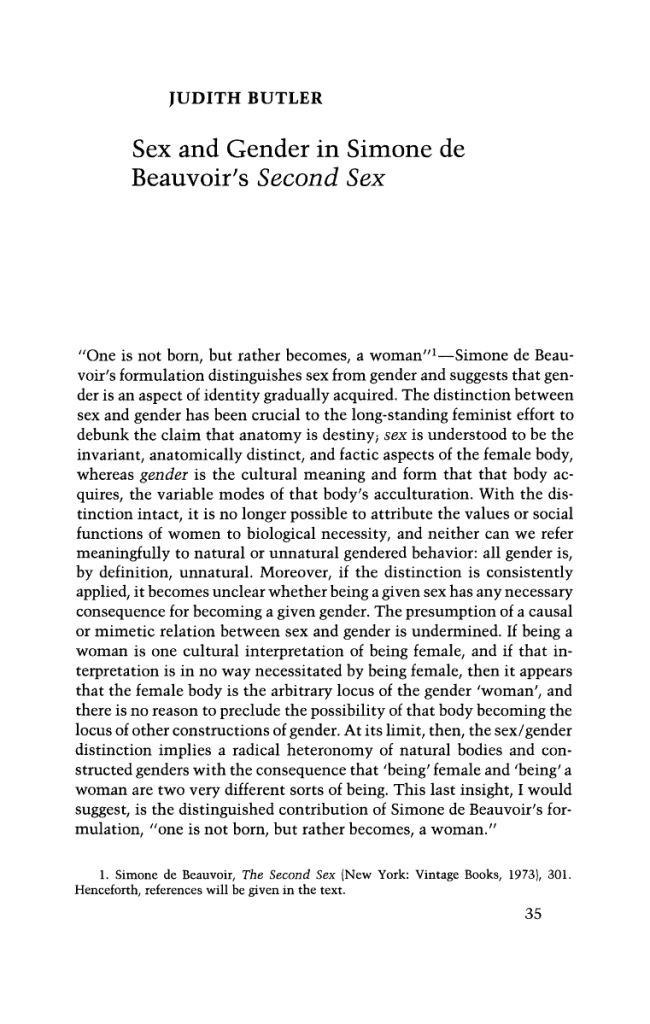
This sentiment has permeated the current age and now characterises the standard of the present culture. This was the establishment of transgender ideology in the desexing of women by feminism. It does this by positioning women as negationary radicals defined only as being in perpetual flux and in eternal opposition to all concepts of cultural norms and all holistic Essentialist and monistic philosophies of ontological Knowing. “One is not born […] a woman”, directly invoking the origin and creation of life, she makes metaphysical and ontological claims. She articulates an ontotheological meaning as a way of Being and therefore fulfils the role of theology; here we have an overt instantiation of feminism as a branch of Satanic Gnostic Liberation Theology. A Frenchwoman, her works later directly spurred the influential gay radicals of 20th century France and reached full maturity today as Queer Theology, in a continued cultural decline. Click here to read about her impact and the rise of British Empiricism and philosophies of Becoming that preceded early feminist radicals.
Luciferian Theosophist androgynous occultist H. P. Blavatsky published the Lucifer magazine in September 1887 in London. Born of aristocratic means, she was a Russian occultist and the founder of Theosophy, a movement that combined esoteric teachings, Eastern religions, and Western philosophy. She was a controversial figure who undermined the conventional views of her time on religion, science, and society. One of her Theosophical students, Alice Bailey founded the Lucifer Publishing Company, a social engineering NGO in support of the globalist United Nations and it still has a seat on the board today; advising on education, dispensing seminars and teaching materials and even initiating senior board members of affiliated corporations into occult New Age visualization meditation techniques. Although today the name has been obfuscated as “Lucis Trust”; lucis is the Latin genitive case of light, the very same root behind Lucifer as Light-Bringer. Blavatsky expressed a form of Luciferianism, which expressed sympathy for the Devil as a bringer of light and knowledge. HP Blavatsky was not an active suffragette, but she was aware of the popularity of Theosophy with suffragettes, and encouraged it. She rebelled against the feminine ideal of the well-behaved domestic wife, with her radical thinking, her drinking and smoking, her rudeness and her rejection of domesticity. She also influenced several feminists who drew on her Satanic counter-myth to attack the patriarchal use of traditional Bible readings to keep women in their place. Elizabeth Cady Stanton, an American suffragette, collaborated with female Theosophists on The Woman’s Bible, a project that reinterpreted the biblical stories from a Satanic perspective. Blavatsky also tried to push that sexual morality is relative and subjective, and that sexual attraction and love are not limited by physical sex or gender.
She interpreted the biblical story of the Fall in Genesis 3 as a liberation of humanity from ignorance and tyranny, and praised Satan as a cultural hero akin to Prometheus, with disastrous societal consequences to follow. Blavatsky’s Luciferianism exploited a Satanic Feminist counter-narrative to the feminine Essence of women presented by the Bible, framing it as oppressive in a radical framework. She argued that Eve was the first free thinker and the true benefactor of mankind, and the serpent was a symbol of wisdom and sexual power. She also rebelled against the Christian doctrines of original sin, celibacy, and the subordination of women, radicalizing them away from the basis of a feminine Essence. Some of her female followers, such as Elizabeth Cady Stanton and Annie Besant, incorporated her ideas in their feminist writings and activism. Blavatsky’s views on lesbianism are less clear, but some sources suggest that she had a positive attitude towards it. She promoted depopulationist, radical extreme ideologies such as homosexuality and transsexuality. She denounced the so-called persecution of the “third sex” by the church and the law.
Blavatsky wrote of earlier human races which were androgynous, meaning that they reproduced asexually or hermaphroditically. She was known for traveling in masculine attire which spurred rumors that she was a transvestite. She envisioned the divine as the union of the male and female principles, or the spiritual androgyne. This led her to believe that the ultimate goal of spiritual progress was to transcend the duality of sex with a contrasexual essence divorced from biological characteristics termed “gender”, in a radical dissolutionary gnostic conception. She also associated the androgyne with the ancient symbol of the serpent, which she claimed represented wisdom, regeneration, and transformation.
Last but certainly not least, the lesbian Luciferian poet Renée Vivien born Pauline Mary Tarn represents the fatal vice and excess of this ideology. Losing her father when she was a child, she was a poet who expressed a form of Sapphic Satanism in some of her poems, celebrating Satan as the god of femininity, the creator of woman, and the protector of homosexuals. She used Satanism as the language of radicalism against both patriarchy and heterosexuality, and as part of her Decadent aesthetics. She was influenced by the Symbolist and Parnassian movements, and used ancient Greek literature and mythology to her ends.
Vivien was also a high-profile lesbian in the Paris of the Belle Époque, who had homosexual relationships with women writers, such as American heiress Natalie Clifford Barney, a lesbian feminist writer and French feminist writer Colette. She wrote many poems that were autobiographical and focused on lesbianism. She developed a fixation on Sappho, the ancient Greek poetess who was a symbol of lesbianism, and translated her works. She targeted young women with her Satanic lesbian poetry, whom she conceived of as her audience, in her poem entitled “You For Whom I Wrote,” she targets young women as the intended audience of her homosexual Satanism.
Some sources suggest that Vivien and Casati may have met at a party hosted by Robert de Montesquiou, a French poet and dandy who was a friend and mentor of both women. They also both admired the actress Sarah Bernhardt. Robert de Montesquiou was a French poet, art collector, and dandy who was acquainted with all three women. He was seduced to Bernhardt’s bedchamber by the ideation that she was the manifestation of his philosophy that a woman’s raison d’être was to become a work of living art. He had a brief affair with Sarah Bernhardt in 1876, but reportedly was repulsed by her and vomited for twenty-four hours after sleeping with her. He admired Luisa Casati as a living work of art and attended some of her extravagant parties in Paris and Venice.
Other accounts state that Vivien was in a relationship with Hélène de Zuylen de Nyevelt née de Rothschild, a French Baroness of the Rothschild banking family and writer, at that time. In the year of 1902, Vivien was the target of the passions of the exceedingly affluent and 14-year-senior Baroness Hélène de Zuylen, a scion of the Parisian branch of the Rothschild dynasty, in long-term liaisons. Zuylen, despite indulging Vivien’s homosexual Satanism, was married and had two children. Zuylen indulged and groomed a needy Vivien with emotional indulgences, wish fulfilment and wealth, acting as an enabling older Satanic lesbian rolemodel. However, this association with Satanism was later to be discounted and disassociated from the Rothschilds in order to maintain public repute. Zuylen’s elevated social rank precluded the possibility of a conspicuous relationship, but she and Vivien frequently journeyed together and maintained a covert affair for several years. In epistles to the French journalist and Classical scholar Jean Charles-Brun, Vivien regarded herself as wedded to the Baroness de Rothschild. She may also have produced prosaic works in conjunction with Zuylen under a nom de plume, Paule Riversdale; providing an insight into the Satanic occult ideology of the two women. However; some academics conjecture that they were authored exclusively by Vivien and the ascription of these works is dubious, this may be a strategy to disassociate the Rothschild name from Satanism, in fact, certain tomes published under Zuylen’s appellation may be, in reality, Vivien’s oeuvre.
Whilst with Zuylen, Vivien obtained a missive from an enigmatic admirer in Istanbul, Kérimé Turkhan Pasha, the spouse of a Turkish envoy. This instigated an ardently fervent epistolary exchange, followed by secretive clandestine affairs. Kérimé, who was educated and refined in French culture, nonetheless adhered to the Islamic custom. Secluded and veiled, she was incapable of travelling liberally or departing from her husband, although she was considered an emancipated woman and held governmental posts. Meanwhile, Vivien was unwilling to relinquish the Baroness de Zuylen. In 1907 Zuylen suddenly deserted Vivien for a new woman; rumours abound among the lesbian sectaire of Paris.
Profoundly dismayed and mortified, Vivien bolted to Japan and Hawaii with her mother and contracted a severe malady on the voyage, symptomatic of her inner instability and propensity for traumatic homosexual relations dressed in dramatism. An obvious stunted childhood expressed as protracted androgynous sterility, and a fear of fruitful and meaningful transformative heterosexual attachment with a mature feminised sexuality undergirds these frequent confused hysteria — a common trope among masculinised lesbians alienated from healthy feminised roles that compensate by latching on to ideology such as Satanism, Radicalism and Feminism; a sort of failure to launch. Another psychosomatic emotional upheaval befell in 1908 when Kérimé, upon relocating with her husband to Saint Petersburg, terminated their affair. Unhealthy fixations, despair spirals, and guilt-ridden homosexual love characterised Vivien since her unconsummated childhood fixation and lifelong obsession with her closest childhood friend and neighbour, Violet Shillito, who was the thematic source for Vivien’s frequent invocation of and obsession with violet flower imagery in numerous poems and book titles. Violet died of typhoid fever shortly after being abandoned for Natalie Barney; a despair from which Vivien, guilt-ridden, would never fully recover in what biographer of lesbian figures Diana Souhami cites as Vivien’s “longing to be dead”.
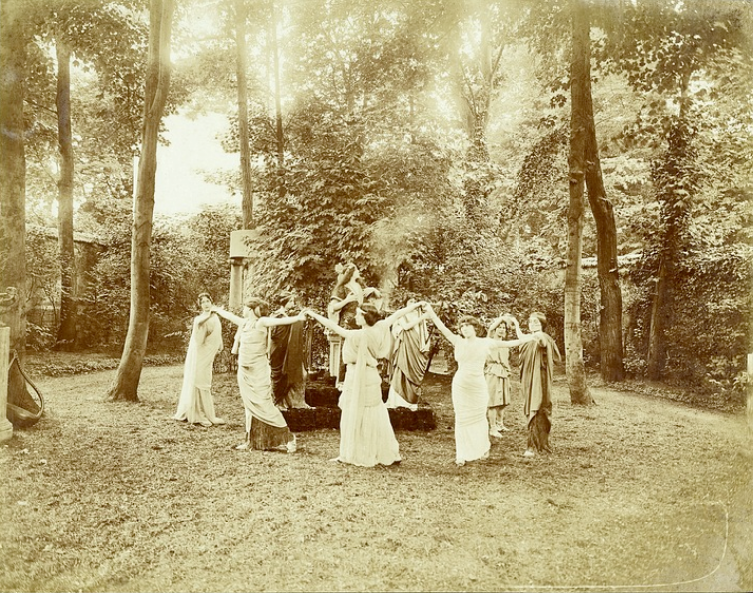
Barney met a virginal Vivien at the theatre after a tumultuous affair that ended in abandonment with the famed courtesan Liane de Pougy. Still reeling from the loss and searching for emotional fixation she pursued Vivien. Barney acted as her first initiation into Satanic Feminism. A naive Vivien believed in monogamy, to which Barney was unwilling to agree. Barney claimed Vivien had cast her as femme fatale for her “to lose herself … entirely in suffering” as a sacrifice to her art. These unstable emotional turbulences, and manipulative relations with senior lesbians had a profound impact on Vivien, exacerbating her protracted psychological deterioration, which had been underway under the influence of the Baroness de Rothschild and her excesses with Vivien; having plied her with decadence and vice before abandoning her. She spiralled deeper than ever before into alcohol and drugs to act out her psychosomatic turbulence in sadomasochistic fantasies ever more frequently. She indulged her most unusual and pathological impulses with increasing eccentricity. In a form of sex addiction, she engaged in secretive sexual activities that deprived her of sleep for days, even deserting champagne dinner guests when apparently called by a voracious lover; perhaps as a form of exhibitionism. In the throes of self-destructive and suicidal ideation from her failed idealised lesbian encounters, she attempted suicide many times often to dramatic effect, rejected adequate nutrition and displayed symptoms of anorexia nervosa — which was to ultimately lead to her demise.
Vivien had severe psychological problems and neuroses, suffered from alcoholism, drug abuse, and anorexia nervosa, which contributed to her early death at the age of 32. Despite being born of affluent means, she was deeply unhappy, hateful of social conventions. Groomed by a decadent subculture particular to elitist feminists, she was preyed upon by affluent predatory satanists and lesbians and failed to integrate into society. She attempted suicide in dramatic cries for help several times, and once posed herself on a divan with violets over her chest for dramatic effect in an attempted suicide; in dark reference to her deceased childhood romantic fixation, however this was not captured on camera. By the summer of the final year of her life, she walked with a cane. She died in Paris on the morning of the 18th of November 1909; the cause of death was reported at the time as “lung congestion” but likely resulted from pneumonia complicated by her alcoholism, drug abuse and prolonged sadomasochistic sex sessions compounded by anorexia nervosa. She never had children.
TOP – back to Satanic Feminists
Depopulation & Malthusian Empiricism
The basis of the Roman Saturnalia and motifs surrounding the god of the aboriginal black race provides another dimension to the Satanic paradigm. In it, hierarchical and moral inversion, abolition of hierarchy between slaves and nobles, egalitarianism, abolishment of private property and communal living are themes we see live at work once again in the modern institutions of social engineering, in a way that is decisively Satanic in Abrahamic religions and Marxist in an economic social lens.
"The first inhabitants of Italy were the Aborigines, whose king, Saturnus, is said to have been a man of such extraordinary justice, that no one was a slave in his reign, or had any private property, but all things were common to all, and undivided, as one estate for the use of every one; in memory of which way of life, it has been ordered that at the Saturnalia slaves should everywhere sit down with their masters at the entertainments, the rank of all being made equal." Justinus, Epitome of Pompeius Trogus 43.3

A Malthusian depopulationist agenda has emerged centring on woman empowerment as the nexus of reducing fertility, that forms another cornerstone of the radical paradigm. This tiresome protraction of the Original Sin that tempted Eve outlines the temptation used by radicals to seed enmity, envy and a primeval defiance that in the words of Lee Edelman is an “authentic position of resistance” by which all radical entryism is accomplished across social, national, and nation-producing personal institutions such as family. This is the substance of the matter to be outlined. The projected birth rate for the world in 2024 is a catastrophic 17.299 births per 1,000 people, a 0.94% decline from 2023; the current birth rate for the USA in 2024 is estimated to be **12.009 births per 1,000 people**, a 0.12% decline from 2023. To see the practical implementation of the empiricist philosophy in the commodification and corporatisation of women and stigmatisation of stable youthful marriage at the behest of NGO policy with Man as pure quantity alone, followed by existentially threatening birth rates and the onboarding of transhumanism via the reproductive process; please read our Transhumanism & Artifical Wombs page. We shall group several important poles together, giving the reader a network to proceed further and psychological protection against a shapeshifting subversive force that can wear any mask.
In this manner, the banner of “progress” is used to group a variety of philosophies of Becoming which pervade radical feminism, queer and gender ideology.

Though "queer" as the endlessly mutating token of non-assimilation (and hence as the utopian badge of a would be "authentic" position of resistance) may reflect a certain bourgeois aspiration to be always au courant, its vigorous and unmethodical dislocations of "identity" create, at the risk, to be sure, of producing a version of identity politics as postmodern commodity fetishism, a zone of possibilities in which the embodiment of the subject might be experience otherwise. Edelman, Lee. Homographesis, 114

An unchallenged insistence on “progress” standardises the Luciferic Standpoint Diabolos discussed initially, in a variety of modern philosophies of “Becoming” that amount to the dissolutionary universal flux between opposites of Heraclitus and Marx. These have shown today a robust development and entrenchment unprecedented in ancient times; though a trajectory and commonality of genera under “evolutionism” may be delineated for these philosophies of subversion. Under the radical Jacobins, the most radical and ruthless of the political groups formed in the wake of the French Revolution in association with Robespierre, the driving force for the Terror of 1793, materialism could now become a fashionable commodity and found heavy promotion in media leading the French Revolution. Reason was the new gnostic Sophia, Goddess of Revolution. Temples of Reason were erected, complete with prostitutes standing in as the Goddess at the altar akin to the Femen activist mentioned earlier, and a new calendar was inaugurated. We see the radicals are still up to the same tricks.
In this manner, all wisdom beyond naturalistic sense means is systematically denied, debated, and debunked in presuppositional formal denial of metaphysic — the immutable and eternal principles and methods of Knowing. Here we meet the ontological diabolos in full form. This is a philosophical subjugation, in this way, rather than the philosophy serving as the means by which to accrue knowledge — all knowledge is rather disregarded, stigmatised and otherised for the young radical wouldbe intellect. It becomes impossible in fact to attain, and is the most fitting description for the term “demoralization”, in what time and time again is a highly manipulative violation of cognition. Eternal struggle with the nature of reality in a Heraclitean eternal flux is mandated as an essential part of radicalist philosophy as the critique of Diabolos. This is gnostic satanic liberation applied to a sociological lens in Marxism acting as the genera for the proliferation and mainstreaming of different sub-species of radicalist philosophies of Becoming:

The distinction between sex and gender has been crucial to the long-standing feminist effort to debunk the claim that anatomy is destiny[…]being a woman is one cultural interpretation of being female[…]it appears that the female body is the arbitrary locus of the gender ‘woman'[…]’being’ female and ‘being’ a woman are two very different sorts of being. This last insight […] is the distinguished contribution of Simone de Beauvoir’s formulation, “one is not born, but rather becomes, a woman”.
Judith Butler, Sex and Gender in Simone de Beauvoir’s Second Sex. Transgender and in fact Transhuman ideology explicitly starts with Feminism, it is not about “empowering women”, it never has been. Quite the opposite, it can only be about destroying Woman as an ontological precept.

The disconnection of biological sex from an essence known as Gender that began with Simone de Beauvoir’s The Second Sex articulates an ontotheological meaning as a way of Being and therefore fulfils the role of theology. “One is not born […] a woman”, directly invoking the origin and creation of life, she makes metaphysical and ontological claims. Here we have an overt instantiation of feminism as a branch of Satanic Gnostic Liberation Theology. The title is evocative of the creation of woman as second after Adam; she reads like the aforementioned Marxist gnosticism applied to the sociological dimension of sex, in a hijacking of female identity and deliberate grooming of the most vulnerable demographic besides actual children; who half a century later are now on the Marxist chopping block after the failure to prevent this initial radicalist movement. What first began with the sub-species of Marxist Satanism known as Satanic Feminism as an entryway now manifests in its latest incarnation as Critical and Queer Theory. Transgender and in fact Transhuman ideology explicitly starts with Feminism, it is not about “empowering women”, it never has been. Quite the opposite, it can only be about destroying Woman as an ontological precept. This radicalist push now has pervaded culture unconsciously, women have been hijacked with a foreign virus and both men and women are alienated and stigmatised away from any memory of what it meant to be Woman. Judith Butler reflects on the impact of Simone de Beauvoir’s gnostic feminism as a philosophy of Becoming:
"One is not born, but rather becomes, a woman"1--Simone de Beauvoir's formulation distinguishes sex from gender and suggests that gender is an aspect of identity gradually acquired. The distinction between sex and gender has been crucial to the long-standing feminist effort to debunk the claim that anatomy is destiny; sex is understood to be the invariant, anatomically distinct, and factic aspects of the female body, whereas gender is the cultural meaning and form that that body acquires, the variable modes of that body's acculturation. With the distinction intact, it is no longer possible to attribute the values or social functions of women to biological necessity, and neither can we refer meaningfully to natural or unnatural gendered behavior: all gender is, by definition, unnatural. Moreover, if the distinction is consistently applied, it becomes unclear whether being a given sex has any necessary consequence for becoming a given gender. The presumption of a causal or mimetic relation between sex and gender is undermined. If being a woman is one cultural interpretation of being female, and if that interpretation is in no way necessitated by being female, then it appears that the female body is the arbitrary locus of the gender 'woman', and there is no reason to preclude the possibility of that body becoming the locus of other constructions of gender. At its limit, then, the sex/gender distinction implies a radical heteronomy of natural bodies and constructed genders with the consequence that 'being' female and 'being' a woman are two very different sorts of being. This last insight, I would suggest, is the distinguished contribution of Simone de Beauvoir's formulation, "one is not born, but rather becomes, a woman." 1. Simone de Beauvoir, The Second Sex (New York: Vintage Books, 1973), 301. Judith Butler, Sex and Gender in Simone de Beauvoir's Second Sex, Yale French Studies, No. 72, Simone de Beauvoir: Witness to a Century (1986), pp. 39-49, 1973
Gone is the standard of a way for Woman to be as part of a holistic Whole, now desexed from an Essential ontological Womanness, other than to be in continual flux conflicted against the norm. This sentiment has permeated the current age and sets the standard of the present culture. Women are first radicalised as an easily seduced entryway, thus the feminists playing the useful idiot have sufficiently disrupted social and cultural norms and polarised them across sex lines, only to then be discarded by the Marxist Telos of History; the Satanist gnostics moved on. Diabolos as a radical Heraclitean philosophy of Becoming was next picked up by gay radicals such as highly influential Michel Foucault who cites Simone de Beauvoir, by David M. Halperin who canonised Foucault as a Saint in his Saint Foucault: Towards a Gay Hagiography, and by Lee Edelman in the latest formulation and Marxist sub-species of Queer Theory and Drag Pedagogy, leveraging paedophiles as the most caustic form of activism, which you may read more about here; just look at what they present:
To be gay is to be in a state of becoming . . . the point is not to be homosexual but to keep working persistently at being gay . . . to place oneself in a dimension where the sexual choices one makes are present and have their effects on the ensemble of our life . . . [T]hese sexual choices ought to be at the same time creators of ways of life. To be gay signifies that these choices diffuse themselves across the entire life; it is also a certain manner of refusing the modes of life offered; it is to make a sexual choice into the impetus for a change of existence. Foucault, Michel. Joecker et al. "Histsoire et homosexualité" 24
Unlike gay identity, which, though deliberately proclaimed as an act of affirmation, is nonetheless rooted in the positive fact of homosexual object-choice, queer identity need not be grounded in any positive truth or in any stable reality. As the very word implies, "queer" does not name some natural kind or refer to some determinate object; it acquires its meaning from its oppositional relation to the norm. Queer is by definition whatever is at odds with the normal, the legitimate, the dominant. There is nothing in particular to which it necessarily refers. It is an identity without an essence. "Queer", then, demarcates not a positivity but a positionality vis-a-vis the normative - a positionality that is not restricted to lesbians and gay men but is in fact available to anyone who is or who feels marginalized because of his or her sexual practices: it could include some married couples without children, for example, or even (who knows?) some married couples with children--with, perhaps, very naughty children. "Queer", in any case, does not designate a class of already objectified pathologies or perversions, rather, it describes a horizon of possibility whose precise extent and heterogenous scope cannot in principle be delimeted in advance… Queer politics may, by now, have outlived its political usefulness, but if its efficacy and its productive political life can indeed still be renewed and extended, the first step in this procedure will be to try and preserve the function of queer identity as an empty placeholder for an identity that is still in progress and has as yet to be fully realized, to conceptualize queer identity as an identity in a state of becoming rather than as the referent for an actually existing form of life. Queer politics, if it is to remain queer, needs to be able to perform the function of emptying queerness of it referentiality or positivity, guarding against its tendency to concrete embodiment, and thereby preserving queerness as a resistant relation rather than as an oppositional substance. Halperin, David M. Saint Foucault: Towards a Gay Hagiography
[…] any conception which allows for nothing else than “becoming” is thereby necessarily a “naturalistic” conception, and, as such, implies a formal denial of what lies beyond nature, that is to say of the realm of metaphysic, which is the realm of the immutable and eternal principles. A pretended intuition which is modelled on the ceaseless flux of the things of the senses, far from being able to serve as an instrument for obtaining true knowledge, represents in reality the dissolution of all knowledge possible.
Guenon, Rene. Crisis of the Modern World, 1942
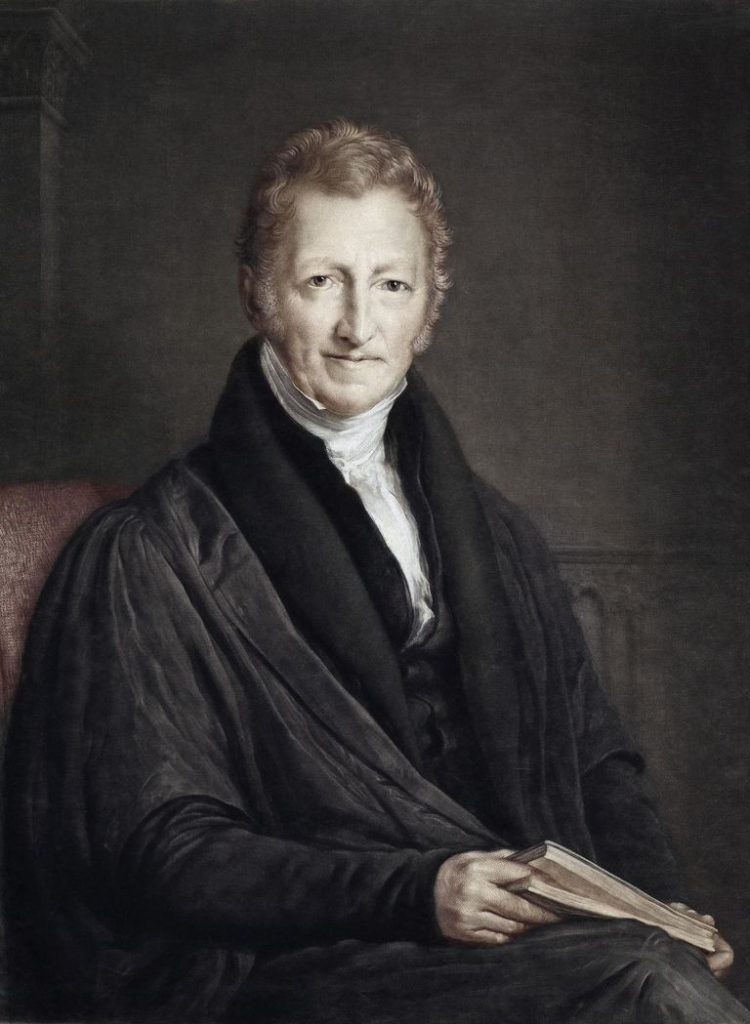
Thomas Malthus only saw humans as numerical units in flawed mathematical formulae, and deliberately sought to stigmatise the passions between the sexes in a depopulationist agenda, also seeing it only in terms of quantity stripped of all Essential meaning: “The passion between the sexes has appeared in every age to be so nearly the same that it may always be considered, in algebraic language, as a given quantity.”
Human nature is no longer an innate metaphysical immutable principle, but rather descends into the layer of linguistics and dialectic, where it may be nagged and tutted at ones discretion as an image recorded by tabula rasa in perpetuo fluxu — the blank slate of British empiricism. Sexuality is no longer Essence but becomes a politicised tool of deconstruction in the hands of critical theorists as diabolos. Thomas Malthus, a British economist, advocated the indiscriminate depopulation of the populace solely through an economical lens and on the basis of dwindling resources. Humanity stripped down to numerical value alone, he evaluated human growth solely by mathematics through flawed mathematical formulae that do not take into account exponential increases in human production along with human population. He saw even the passions between the sexes as a strictly quantitative figure stripped of all Essential meaning. Intended to stigmatise male and female relations, this directly precipitated the rise of feminism and stark shift in culture driven by the empiricist British elite as a fertility-reduction mechanism, which undergirds the depopulationist and radicalist plan. Unrestrained from all higher and personal conceptions, he can be said to have had nefarious motives.
“The passion between the sexes has appeared in every age to be so nearly the same that it may always be considered, in algebraic language, as a given quantity.” Malthus, Thomas. An Essay on the Principle of Population, 1798.
“[…]he becomes an atom rather than a conscious part of the organic unity and hierarchy of a whole. And the atom, in the end, had to find, opposed to himself, the mass of other atoms, other individuals, and to be involved in the emergence of the reign of quantity, of the pure number, of the materialized masses and not having another God outside of the sovereign economy.”
Julius Evola, Orientations

Food and Agriculture Organization
British empiricism precipitated the rise of early feminist radicals. No more were the ontological “male” and “female” metaphysical principles, but these were relegated to the realm of fairies and ghouls, along with Angels, demons, and God Himself. Projection is the channel by which to absolve all guilt and ontological baggage, and traditionalism is cast as “radicalism” in a wildly divergent radical new normal. The Luciferic Standpoint now in full view of History put to shame the earlier philosophies of Becoming of Buddhism, which had not attained such a robust manifestation of the dissolutionary Luciferic Standpoint. The bait and switch of the Lie of Eden; death and dissolution of human Essence rather than godhood, now complete.
The Luciferic Standpoint now in full view of History put to shame the earlier philosophies of Becoming of Buddhism, which had not attained such a robust manifestation of the dissolutionary Luciferic Standpoint. The bait and switch of the Lie of Eden; death and dissolution of human Essence rather than godhood, now complete.
The origin of the radicalist entryway of Reason might have startling origins. British empiricists took after developments in Augustinian Christian theological texts that posited Reason was the way to know God. Nous is the intelligent eye of the soul created by God as a mechanism of perception outside of sense data. It now no longer was the door to the centre of the cosmos, but the human faculty of Reason took primacy and empirical sense data was soon to follow. With Descartes’ Cogito Ergo Sum “I think, therefore I am”, man’s mind, cogitare, was the centre of the cosmos rather than God’s mind — which in itself is heretical in the Christian tradition. A harrowing implication of the reframing of the cosmos on human reason was that now the way opened for British empiricists and a later radical restructuring of society and man himself in catastrophic fashion. The mistakes of the Indian dissolution of Brahman were repeated in Western Civilization in a far more violent, final and comprehensive manner — and all this without the Sword of the Kshatriya! The Luciferic Standpoint emerged as a denial of Nous in Western academic and anthropological fields. This led to rank empiricism, and radical historical materialism, fanned by the flames of violent Masonic French Revolutionists.

With the uncreated energies of God as perceived by Nous no longer girding the basis of an Essentialist viewpoint, a restructuring in the identity of Western man took place, unprecedented in world history, including complete ontological shock, and historical materialist revisionism. This is a truly “radical” departure in the strictest sense. Inherent to the Christian worldview was the universalism of human Reason. Christianity presented unique challenges and vulnerabilities for the satanists and radicals to exploit. During a mental health break, Descartes stayed at a garden with automaton attractions, from this he took inspiration and began to form the basis of a mechanization of biology to accompany the throwing out of metaphysics. He posited that the distinction that set man apart from the animal kingdom, his “ensoulment”, was his faculty for Reason, and that animals were mere meat machines without the Reason granted by God to Adam. This later dropped the metaphysical quality entirely among the empiricists, and starting with Man a Machine by French Revolutionist Radical Julien Offray de La Mettrie, a physician, reduced the human entirely down to material functions, stripped even of dignity. Do you find any better treatment in medical institutions? This pervades the medical industry and Malthusian social engineering “health care” up to today, leading to obvious implications for depopulationist strategies deployed as “health care” and acting as another nexus to divide Man from his Woman.
Woman, divorced from an Essential metaphysical feminine nature could also lay claim to the universal faculty of Reason, and thus embody the first radical — becoming scattered pieces and atomised individuals, becoming lost halves rather than integrated as part of a Whole. This is actually how man was ontologically torn in two, turning on its head the gnostic primordial story of the Androgyne’s division into sexual differentiation! An essential component of transhumanism is the transition of Man into another Being and return to the primordial Androgyne. Actually, Woman has become something else, and the first stage to the Transhuman is feminism. Equalists using empirical sense data believed the individual was the sum of recorded sense impressions on a tabula rasa. John Locke, in the same year as the banker revolution against the English Monarchy dubbed the Glorious Revolution (as always it must be — must always project guilt), among others like Hume put forth the equal potentiality of humans that only could be diminished by adverse environmental factors. One could not imagine a more manipulative projection of the principles of dissolution and Becoming inherent to the Satanic denial of God, Diabolos. Is it any wonder that the Satanic principles of inversion in hierarchy and moral authority followed almost as if by orchestral modulation — precisely on cue?
“Let us then suppose the mind to be, as we say, white paper, void of all characters, without any ideas:—How comes it to be furnished? Whence comes it by that vast store which the busy and boundless fancy of man has painted on it with an almost endless variety? Whence has it all the MATERIALS of reason and knowledge? To this I answer, in one word, from EXPERIENCE. In that all our knowledge is founded; and from that it ultimately derives itself. Our observation employed either, about external sensible objects, or about the internal operations of our minds perceived and reflected on by ourselves, is that which supplies our understandings with all the MATERIALS of thinking. These two are the fountains of knowledge, from whence all the ideas we have, or can naturally have, do spring.” John Locke, An Essay Concerning Human Understanding, published in 1689; a Freemason, this seminal figure of the Enlightenment era was a pioneer of liberal political philosophy and British empiricism following in the tradition of Luciferian Francis Bacon; Locke is widely regarded as the "father of liberalism".
The notion that sense data is the source of all knowing is self-destructive, as this initial epistemological claim is itself not rooted in sense data; in the empiricist view, all knowledge under this axiom is then self-refuting as well as all science. Rather than acting as a method for accruing knowledge, it in fact makes all knowledge impossible by formal denial of systems of knowledge (metaphysic) while itself being rooted in a claim outside of sense data. Rather than being hampered by this, it is in fact the destructive method by which deconstructionists actually then proceed to destroy systems of knowledge and the social order that follows; negation par excellence: Diabolos.
Maya is the empirical reality that entangles consciousness, preventing the unveiling of the ultimate reality of Brahman. In the realm of Advaita Vedanta philosophy, the conceptual landscape delineates two distinct ontological domains: Vyavaharika, denoting the empirical realm characterised by transient phenomena in flux, sense perception, multiplicity, and conventional transactions, and Paramarthika, representing the transcendent dimension of absolute reality, metaphysic, and methods of Knowing; imbued with spiritual significance and immutable essence. Maya became associated with sleep; and Vishnu's Maya is a deep sleep which envelopes the world when he awakes to destroy evil; when Vishnu, a principal deity in Hinduism associated with preservation, is awake, the illusionary power of Maya envelops the world. Advaita, derived from Sanskrit, signifies "non-duality" (a-dvaita), encapsulates the Vedantic tenet that the ultimate reality (Brahman) is devoid of any dualistic distinctions. A-letheia parallels with A-dvaita, as doxa parallels with Maya. This ontological stance converges with the rejection of dualities of Julius Evola, an assertion foundational to his Traditionalist philosophy, emphasizing a transcendence of mundane dichotomies in favour of a primordial Unity ordering principle and Wholeness as the ontological substratum. Women Going Our Way, Transhumanism & Artifical Wombs; an exposition on the practical consequences of rank empiricist philosophy as technological hyperreality.
Now the groundwork for modern humanism and social causes lain, women only differ in biology and a newly incomprehensible repression under historical materialism could be teased out. With the flames of the Revolution fanned by a desire to reconstruct society, a fully unrestrained ore vein of the Satanic Feminine could be radicalised, exploited, commodified, and distributed globally across wide demographics and an endlessly proliferating number of disadvantaged envious and victimised social classes in a total collapsing materialization of the psyche, characterised by multiplicity and descent. Books rewritten, films recast and History changed. Everything is evil but Evil, displaying a clear contempt for humanity with women as the envious tip of the poisoned spear, puffed up on a very foreign (to humanity) and oddly distinct insolent Hubris… All this buttressed with an overcompensatory radical drive to mask an insecurity, a projected feminine shortcoming of Essential masculine Virtue and Strength, ensuring total insulation from any immutable Principle integral to personal development and unity with anything outside oneself, the Totality. Diabolos acta completa. Stunted childhood and individualism are the methods by which one is infantilised and affixed to a secularised and subverted state. Banking cartels and their attendant NGOs driving internationalist regime change made great use of this in the restructuring, destabilization and takeover of nations as a political weapon that removed all Authority and Sovereignty by way of women’s liberation. Society is reshaped with liberated women in prominent managerial positions in a globalised technological franchise and Satanic revolutionist enterprise.
Woman, choose harmony and order. Abandon radicalism and Satanic discord.
Woman, choose a higher meaning. Abandon independence, vanity, envy, and personal convenience.
Woman, be raised, choose to Go Our Way, today.



